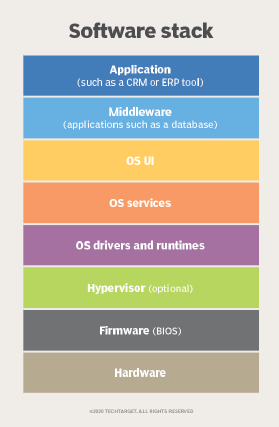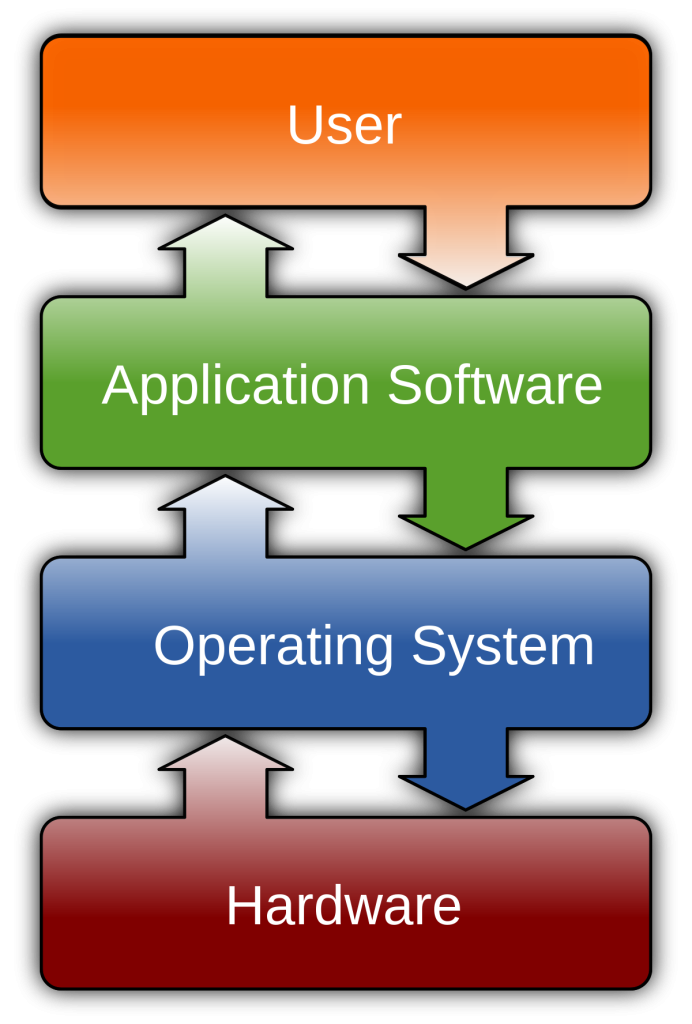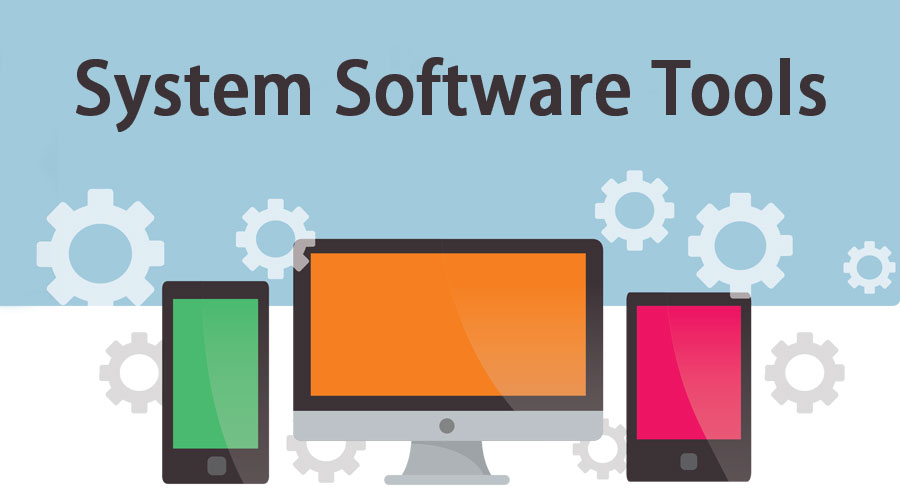So you’re wondering what exactly qualifies as a software tool? Well, let’s break it down for you. A software tool can be any program or application designed to assist with a specific task or function within the realm of computer software. It could be a code editor, a debugging tool, a performance analyzer, or even a project management software. Essentially, if it’s designed to make your life as a software developer easier or more efficient, it falls under the umbrella of a software tool. A software tool is a program or application that is designed to assist with certain tasks or activities related to software development, testing, design, project management, or debugging. These tools provide developers and other team members with the necessary resources and capabilities to streamline their work, improve productivity, and enable efficient collaboration. From automating repetitive tasks to enhancing the accuracy of code, software tools have become an indispensable component of modern software development processes.

This image is property of cdn.ttgtmedia.com.
Different Types of Software Tools
Development Tools
Development tools, also known as Integrated Development Environments (IDEs), are software applications that provide developers with a comprehensive set of features and functionalities for writing, compiling, debugging, and testing code. These tools often include code editors with syntax highlighters, build systems, debugging utilities, and version control integration. Some popular development tools include Visual Studio, Eclipse, and Xcode.
Testing Tools
Testing tools are software applications that help with the testing and quality assurance processes of software development. These tools automate the execution of test cases, monitor code coverage, and provide detailed reports on the status of tests. They also aid in the identification and debugging of issues and vulnerabilities in the software. Popular testing tools include Selenium, JUnit, and TestComplete.
Design Tools
Design tools are software applications that facilitate the creation and visualization of user interfaces, graphics, and multimedia elements of software applications. These tools often offer a wide range of features, such as drag-and-drop interfaces, pre-built design elements, and collaboration capabilities. Design tools like Adobe Photoshop, Sketch, and Figma are widely used among graphic designers and UI/UX designers.
Project Management Tools
Project management tools are software applications that assist with planning, scheduling, tracking, and managing the various aspects of software development projects. These tools provide a centralized platform for task management, resource allocation, team communication, and progress monitoring. Popular project management tools include Jira, Trello, and Asana.
Debugging Tools
Debugging tools are software applications that help developers identify and fix errors, bugs, and other issues in their code. These tools provide features such as breakpoints, various types of code analysis, and memory and performance monitoring. Debugging tools aid in the efficient isolation and resolution of problems, leading to improved software quality. Popular debugging tools include Visual Studio Debugger, Xdebug, and Valgrind.
Characteristics of Software Tools
Automation
One essential characteristic of software tools is their ability to automate repetitive or time-consuming tasks. By automating these tasks, software tools enable developers and other team members to focus on more critical aspects of their work, such as code design and problem-solving. Automation enhances productivity and efficiency by reducing manual effort and minimizing error-prone processes.
Efficiency
Software tools are designed to optimize and streamline software development workflows, making them more efficient. Whether it’s through code generation, code refactoring suggestions, or streamlined collaboration features, these tools aim to minimize the time and effort required to complete tasks. By increasing efficiency, software tools allow developers to deliver projects faster and more effectively.
Usability
Another crucial characteristic of software tools is usability. Good software tools are intuitive and easy to use, allowing users to quickly adapt to them without extensive training or documentation. Usability ensures that developers and other team members can effectively leverage the full potential of the tool and maximize their productivity.
Versatility
Software tools are designed to be versatile, meaning they can be used across a wide range of projects and industries. Whether it’s web development, data analysis, graphic design, content management, or network management, software tools offer capabilities and features that cater to various domains. This versatility allows developers and teams to use the same toolset across different projects, reducing the learning curve and ensuring consistency.
Interoperability
Software tools are often designed to be compatible and interoperable with other tools and systems. They can integrate with version control systems, issue-tracking software, project management platforms, and other tools that are part of the software development ecosystem. Interoperability ensures that developers can seamlessly transfer data and collaborate across different tools and platforms, enhancing efficiency and collaboration.

This image is property of upload.wikimedia.org.
Benefits of Using Software Tools
Increased Productivity
One significant benefit of using software tools is increased productivity. By automating repetitive tasks and providing streamlined workflows, these tools enable developers and team members to accomplish more in less time. Developers can write code faster, testers can execute test cases more efficiently, designers can create visuals with greater ease, and project managers can track progress and allocate resources more effectively. Increased productivity leads to faster project completion and improved time-to-market.
Time and Cost Savings
Software tools also contribute to significant time and cost savings. By automating tasks, reducing errors, and enhancing collaboration, these tools minimize the time and effort required to complete projects. This reduction in time translates to cost savings, as fewer resources are needed to accomplish the same tasks. Companies can allocate their budgets more efficiently, and developers can work on other critical areas of software development.
Improved Accuracy
Software tools often come with built-in features that enhance the accuracy of code and reduce the occurrence of errors and bugs. For example, code editors with syntax highlighters can help developers identify syntax errors in real-time, while automated testing tools can ensure that test cases are executed consistently and thoroughly. By improving accuracy, software tools contribute to the overall quality of the software, minimizing the likelihood of customer complaints and improving user experience.
Enhanced Collaboration
Collaboration is a vital aspect of software development projects, and software tools play a significant role in facilitating it. Tools for project management, version control, and communication enable teams to work together seamlessly, regardless of their geographical locations. Developers can share code, testers can share test cases, and designers can share design assets. Enhanced collaboration leads to better coordination, improved teamwork, and ultimately, the delivery of higher-quality software products.
Factors to Consider When Choosing Software Tools
Project Requirements
When choosing software tools, it is essential to consider the specific requirements of your project. Different projects may have different needs, and selecting the right tools for the job is crucial. Assess the development methodology, project size, team composition, and other factors to determine the tools that best align with your project’s requirements.
Compatibility
Compatibility is another critical factor to consider when choosing software tools. Ensure that the tools you select are compatible with your existing systems, such as operating systems and programming languages. Additionally, consider the compatibility of the tools with other tools that are commonly used in your organization or industry. Compatibility ensures seamless integration and reduces potential issues during implementation.
Cost
Cost is an important consideration when selecting software tools. Evaluate the pricing models of different tools, taking into account both the upfront costs and any recurring expenses, such as licensing fees or subscription costs. Consider your budget constraints and weigh the value provided by the tools against their cost. Be mindful of hidden costs, such as training or support fees, which may impact the overall cost of ownership.
Support and Updates
Support and updates are crucial for the smooth operation and longevity of software tools. Ensure that the tools you choose come with adequate support options, such as documentation, user forums, and direct assistance from the software vendor. Additionally, inquire about the frequency of updates and the vendor’s track record in delivering timely bug fixes and feature enhancements. Good support and regular updates contribute to the long-term stability and effectiveness of the tools.
Integration with Existing Systems
Consider the integration capabilities of the software tools with your existing systems. Determine whether the tools can seamlessly integrate with your version control system, issue-tracking software, project management platform, or other necessary systems. Integration allows for efficient data transfer and eliminates the need for manual synchronization between tools. This enables a smoother workflow and minimizes potential bottlenecks.

This image is property of cdn.educba.com.
Popular Software Tools in Different Domains
Web Development
In the domain of web development, there are several popular software tools used for designing, coding, and managing websites. Tools like Visual Studio Code, Sublime Text, and Atom provide powerful code editors with features such as code autocomplete and syntax highlighting. Content management systems like WordPress and Joomla simplify website creation and maintenance, while frameworks like React and Angular help developers build dynamic and responsive web applications.
Data Analysis
Data analysis tools are used to extract insights and make informed decisions based on data. Tools like Excel, Tableau, and Power BI provide intuitive interfaces for data visualization and analysis. Programming languages like Python and R, along with libraries like Pandas and NumPy, offer more advanced data analysis capabilities. Additionally, tools like Apache Hadoop and Apache Spark enable the processing and analysis of large-scale datasets.
Graphic Design
Graphic design tools are used to create visual elements for various applications, including websites, logos, advertisements, and marketing materials. Tools like Adobe Photoshop, Illustrator, and InDesign are widely used by graphic designers for creating and editing images, illustrations, and page layouts. Other design tools, including Sketch, Figma, and Canva, offer robust features for designing user interfaces, wireframes, and prototypes.
Content Management
Content management tools are used to create, organize, and publish digital content. Popular content management systems (CMS) like WordPress, Drupal, and Joomla provide users with intuitive interfaces for managing website content, including articles, images, and videos. These CMS platforms often feature plugins and extensions that enhance functionality and customization options.
Network Management
Network management tools are used to monitor, control, and secure computer networks. Tools like Nagios, Zabbix, and SolarWinds provide network administrators with features such as network monitoring, device discovery, and performance analysis. These tools help identify and resolve network issues, optimize network performance, and ensure the security of network infrastructure.
Challenges and Risks of Using Software Tools
Learning Curve
One challenge of using software tools is the learning curve associated with mastering new tools. Developers and team members may require time and training to become proficient in using new tools effectively. This initial learning curve can temporarily impact productivity until users become familiar with the tool’s features and workflows.
Security Vulnerabilities
Software tools, like any other software application, can have vulnerabilities that expose them to security risks. These vulnerabilities can be exploited by malicious actors to gain unauthorized access to systems or manipulate data. It is crucial to regularly update software tools, apply security patches, and follow best practices for secure coding and system administration to mitigate these risks.
Dependency on External Providers
Using software tools often involves relying on external providers for support, updates, and maintenance. If a provider discontinues support for a tool or experiences downtime or technical issues, it can adversely affect the productivity and availability of the tool. Organizations must evaluate the reliability and stability of tool providers to minimize the risks associated with dependency on external providers.
This image is property of qph.cf2.quoracdn.net.
Future Trends in Software Tools
Artificial Intelligence and Machine Learning
Artificial Intelligence (AI) and Machine Learning (ML) are rapidly gaining momentum and are expected to play an increasingly significant role in software tools. AI and ML algorithms can be used to automate complex tasks, improve code quality, and optimize software performance. These technologies can enable tools to provide intelligent suggestions, automate debugging processes, and enhance overall productivity.
Cloud-based Tools
Cloud-based tools are becoming increasingly popular due to their flexibility, scalability, and ease of access. These tools run on cloud infrastructure, eliminating the need for local installations and hardware dependencies. Cloud-based tools allow easy collaboration, seamless upgrades, and secure storage of data. This trend is expected to continue as cloud computing becomes more prevalent and organizations embrace the benefits of cloud-native applications.
Low-code and No-code Tools
Low-code and no-code tools aim to simplify software development by allowing users to create applications with minimal programming knowledge. These tools provide visual interfaces and pre-built components, enabling users to assemble applications using drag-and-drop features instead of writing code from scratch. Low-code and no-code tools empower business users and citizen developers to contribute directly to application development and can accelerate the delivery of software projects.
Conclusion
Software tools have become an integral part of the software development process, offering a wide range of capabilities and benefits. From development and testing to design, project management, and debugging, these tools automate tasks, enhance productivity, and enable efficient collaboration. By considering factors such as project requirements, compatibility, cost, support, and integration, organizations can select the right tools for their specific needs. While challenges and risks exist, the future of software tools looks promising, with trends such as AI and ML, cloud-based tools, and low-code and no-code options poised to revolutionize the software development landscape. As software development continues to evolve, software tools will play a crucial role in empowering developers and teams to create innovative and high-quality software products.

This image is property of assets.goodfirms.co.
